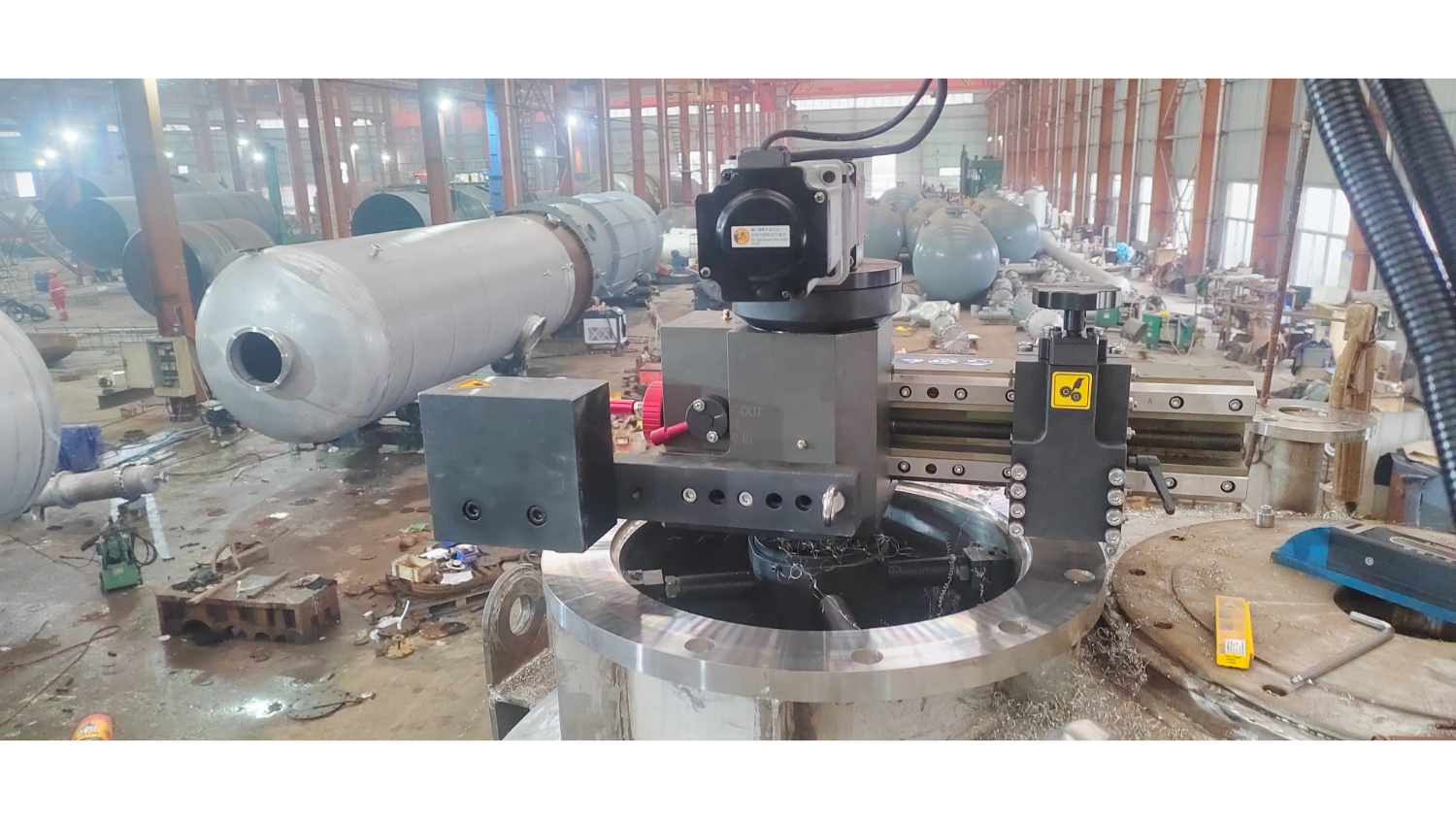
I. Introduction
Gantry cranes are the backbone of modern logistics and heavy industry, capable of lifting and transporting large loads with high efficiency. However, the manufacturing process faces major challenges due to the large size of its components, strict precision requirements and logistical complexity. Traditional fixed milling machines often have difficulty meeting these demands, resulting in delays, increased costs and reduced quality. Portable circular milling machines (PCMM) have emerged as an efficient solution, providing on-site processing capabilities to improve the productivity and accuracy of crane production.
II. Core applications of portable circular milling machines
1. On-site processing of large structural components
PCMM can mill heavy crane beams, columns and joints directly at the assembly site without the need to transport oversized components to a fixed workshop. This can reduce logistics costs by up to 35% and minimize downtime, ensuring seamless integration of components during construction.
2. Flange plate processing
Precision milling of flange connection surfaces on gantry legs and swivel mechanisms ensures flatness within 0.05 mm/m and ensures alignment of bolted components. This prevents stress concentration and ensures safe load transfer between structural elements.
3. Weld preparation and post-weld machining
PCMM creates beveled edges for weld joints and removes excess weld material, achieving a smooth transition that meets surface finish standards.
4. Bearing seat machining
PCMM achieves micron-level tolerances for bearing seats and slewing ring brackets, ensuring optimal load distribution and rotational accuracy.
5. Repair and refurbishment of worn parts
On-site repair of corroded gear tooth flanks, boom hinge points and rail contact areas can extend component life by 2-3 years, reducing replacement costs and downtime.
6. Custom profile cutting
Complex contours on thick steel plates (e.g. pulley brackets, counterweight brackets) are milled with high precision, enabling the production of specialized components to fit unique crane designs.
7. Reduce assembly errors
By machining mating surfaces directly at the assembly stage, real-time adjustments can be made during component assembly, reducing rework by 25% and improving overall production efficiency.
8. Portability in confined spaces
The modular PCMM setup facilitates machining in hard-to-reach areas (such as internal door legs), ensuring that no parts are missed due to accessibility restrictions.
9. Heavy-duty fastener thread milling
Large diameter threaded holes (M64+) for high-strength bolts in crane joint connections have thread accuracy that complies with ISO 68-1 6g grade standards.
10. Surface treatment for corrosion protection
The uniform texture milled into the metal surface enhances the adhesion of protective coatings or galvanizing, thereby extending the service life of components in harsh environments.
III. Advantages of portable circular milling machines
1. PCMM eliminates the need to dismantle or transport large crane components by mounting directly to the bearing seat location, ensuring machining accuracy consistent with the assembled geometry of the crane.
2. High-rigidity modular frame with hydraulic clamping device absorbs vibration, while integrated digital micrometer and laser alignment tool monitor flatness and concentricity in real time.
3. Automatic feedback system dynamically adjusts cutting depth to compensate for material changes or tool deflection.
4. Initial rough milling removes weld/casting irregularities, followed by fine milling with carbide end mills (variable helix angle minimizes chatter in large diameter operations).
5. For the slewing ring mount, the machine uses circular interpolation to mill bolt holes and diameters, optimizing tool paths to ensure concentricity with adjacent components.
6. Post-processing verification via portable coordinate measuring machines or laser trackers allows iterative corrections without disassembly, ensuring micron-level accuracy and load-bearing reliability.
IV. Advances in PCMM Technology
1. IoT integration: real-time monitoring of cutting parameters for predictive maintenance.
2. Hybrid systems: combining milling with additive manufacturing for on-site repairs.
3. Energy efficiency: battery-powered models for off-grid operation.
V. Conclusion
Portable circular milling machines have redefined the precision and efficiency of gantry crane manufacturing. Capable of meeting logistical challenges, providing micron-level accuracy and making on-site adjustments, they are an indispensable tool for modern heavy machinery production. As the industry places increasing emphasis on sustainability and cost-effectiveness, PCMM will continue to play a key role in shaping the future of crane manufacturing.